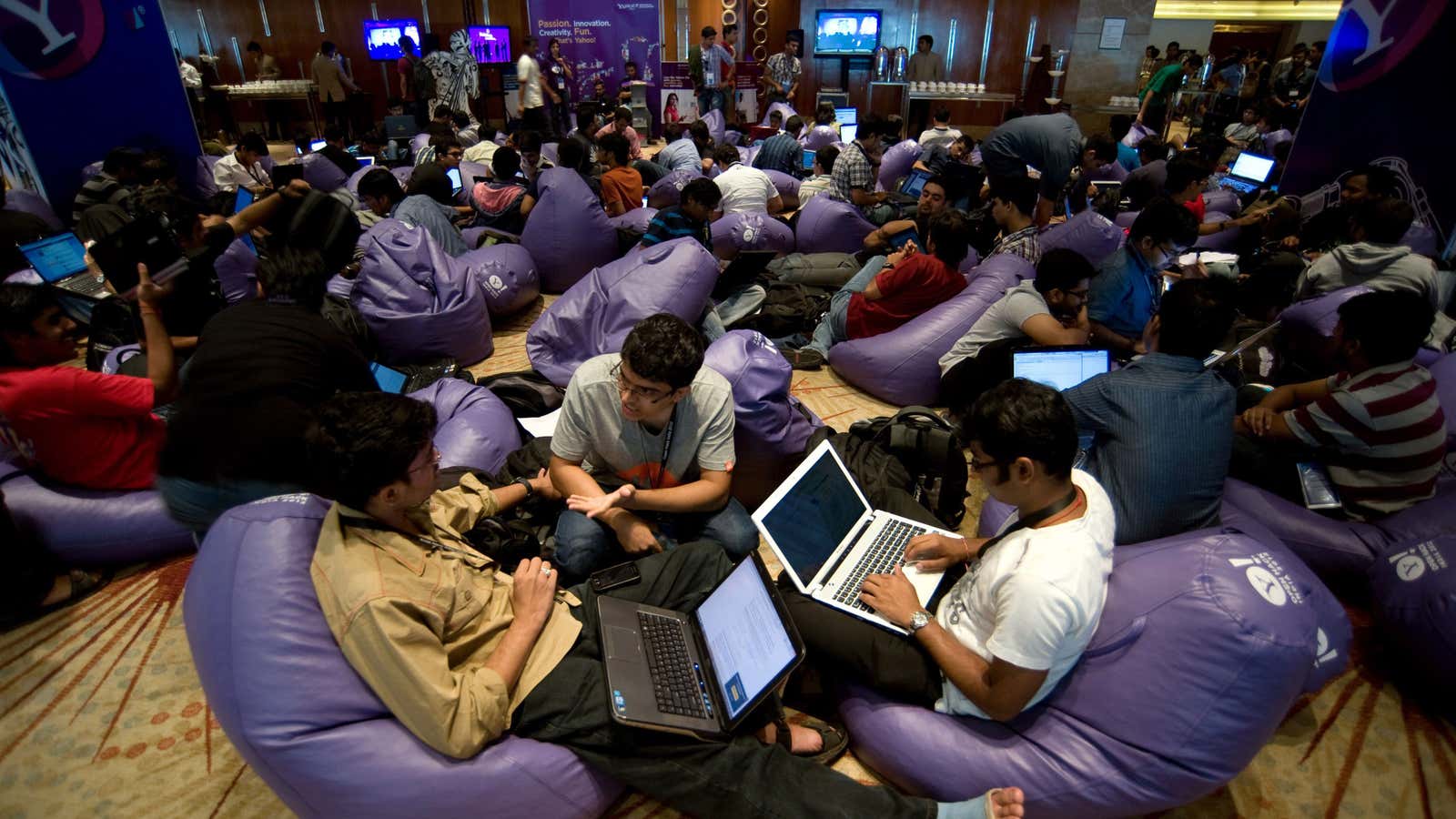India is getting serious about embracing innovation. And the spurt in the number of patents issued in the country reflects that trend.
In 2017, up to 13,045 patents were granted in India—twice as many as in 2015—according a written submission to parliament by CR Chaudhary, minister of state in the ministry of commerce and industry. In 2016, the number stood at 9,847, the data submitted to the Rajya Sabha (the upper house of parliament) show.
The reasons for this spurt could be many, including the 12-fold annual increase in the number of startups in the country in 2017 and its rapid rise as a research and development destination.
Then there’s also the National Intellectual Property Rights (IPR) Policy introduced by the government in 2016, which has warmed up the ecosystem by simplifying procedures and building awareness. The policy is aimed to cut the average time to address IPR applications from over five years to 18 months. Authorities are now even allowing expedited examination on a case-by-case basis, according to Chaudhary.
This is huge change from the norm in India which has traditionally been terrible at IPR protection. Lacking manpower, the government typically sits on hundreds of thousands of pending applications.
Not anymore though.
“Recruitment has been completed for 459 posts of examiners of patents and designs,” Chaudhary said, adding, “Further, 84 new posts of examiners and 95 posts of controllers have been sanctioned.”
Prime minister Narendra Modi’s Startup India initiative has also awarded 975 beneficiaries an 80% rebate on their patent application fees.
Meanwhile, efforts are being made to tone down cumbersome processes. For instance, “applications can be transferred electronically from any of the patent office branches to another,” Chaudhary said. Hearings through video conferencing is now permitted, too. The IP website has “been updated to make it more interactive, informative, user-friendly and transparent,” the minister claimed.
However, India still has other problem areas to address. Typically, it has spent a dismal 0.6% of its GDP on research and development, far behind the global average. In fact, this gap begins to show early on through primary and secondary education.
